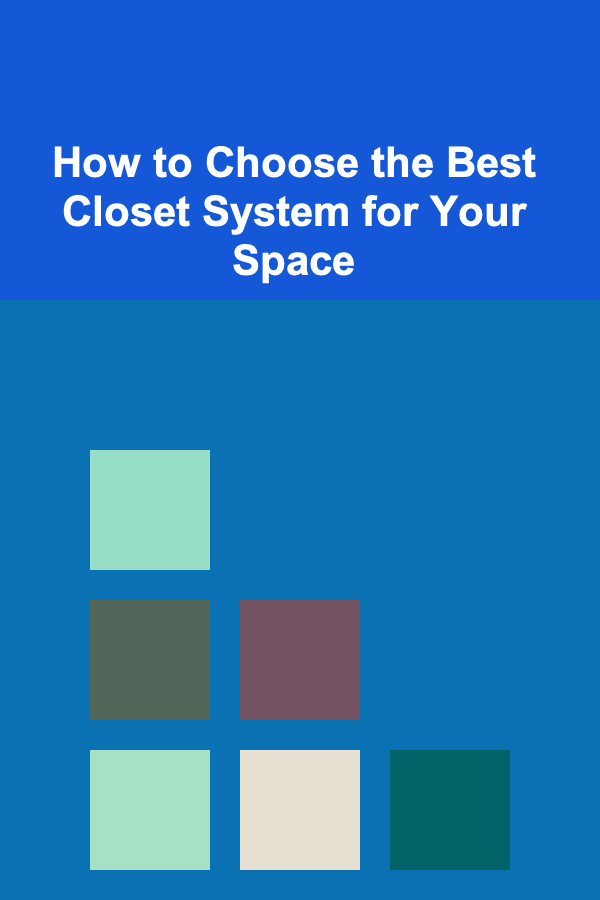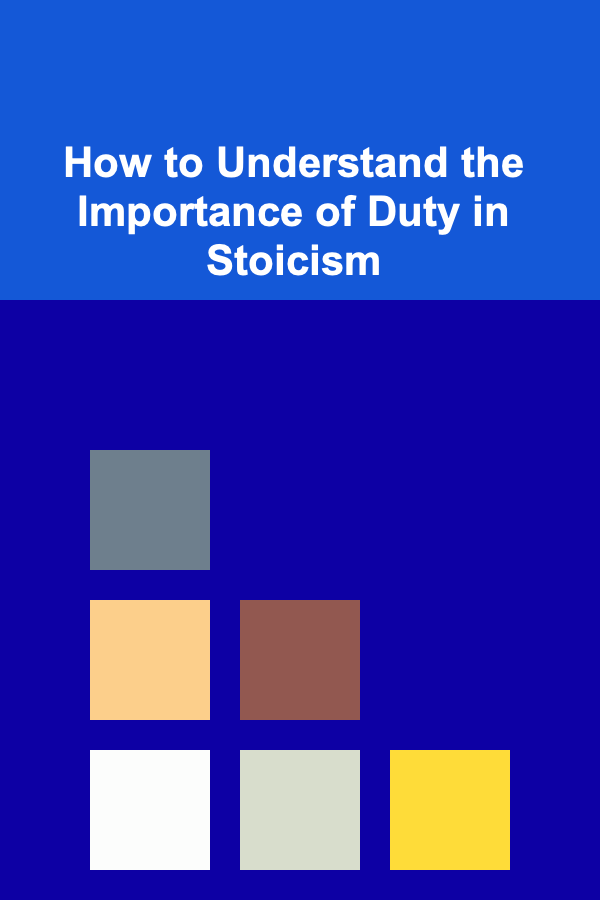
How to Choose the Right IoT Platform as an Architect
ebook include PDF & Audio bundle (Micro Guide)
$12.99$7.99
Limited Time Offer! Order within the next:
Not available at this time

The Internet of Things (IoT) has revolutionized the way we live and work, offering unprecedented opportunities to enhance automation, connectivity, and data-driven decision-making. IoT has applications across various industries, including healthcare, manufacturing, transportation, agriculture, and smart homes, among others. As an architect responsible for the design and implementation of IoT solutions, one of the most critical decisions you'll need to make is selecting the right IoT platform.
Choosing the right IoT platform is essential because it serves as the backbone for the entire system. The platform you select impacts the performance, scalability, security, cost-effectiveness, and long-term viability of your IoT solution. With a wide array of IoT platforms available, it can be challenging to navigate through the options and make an informed decision. This article will provide a detailed guide on how to choose the right IoT platform, taking into account the various factors that an architect should consider.
What is an IoT Platform?
An IoT platform is a suite of software and services that enables the development, deployment, and management of IoT solutions. It provides the necessary infrastructure, tools, and interfaces for connecting devices, processing data, and enabling communication between IoT devices and applications. Typically, IoT platforms offer features like device management, data ingestion and processing, analytics, cloud storage, security, and integration with other systems.
These platforms are designed to simplify the complexities of managing IoT networks, allowing architects and developers to focus on creating value-added applications instead of managing low-level infrastructure and connectivity concerns.
Key Considerations When Choosing an IoT Platform
Choosing the right IoT platform depends on a variety of factors, including the project requirements, scalability, security, cost, and integration capabilities. Below are the key considerations that should guide your decision-making process.
1. Define Your Use Case and Requirements
Before diving into the technical details of IoT platforms, it is essential to clearly define the use case and requirements of your IoT solution. Understanding the problem you're solving, the devices involved, and the type of data that will be collected will provide crucial insights into the platform's suitability.
Questions to Ask:
- What type of IoT devices will be used (e.g., sensors, actuators, gateways)?
- What protocols will the devices use to communicate (e.g., MQTT, HTTP, CoAP)?
- What kind of data will be collected, and how will it be processed?
- What kind of applications will be built (e.g., real-time monitoring, predictive analytics, automation)?
- Will the system need to scale in terms of devices or users?
- Are there any specific regulatory or compliance requirements (e.g., GDPR, HIPAA)?
By answering these questions, you can narrow down your search for an IoT platform that aligns with the specific needs of your project.
2. Device and Protocol Compatibility
An IoT platform needs to be compatible with a wide range of devices and communication protocols. IoT ecosystems often involve various sensors, actuators, and gateways from different manufacturers, so ensuring that the platform can support these devices is crucial. Furthermore, IoT devices may use different communication protocols, such as MQTT, HTTP, CoAP, or Bluetooth. The IoT platform you choose should be able to handle all the protocols required for seamless communication.
Key Considerations:
- Ensure that the platform supports the specific types of devices you plan to use.
- Check if the platform supports multiple protocols to handle diverse communication needs.
- Consider the ease of integrating devices from different manufacturers or platforms.
3. Scalability
Scalability is one of the most important considerations for choosing an IoT platform. Whether you are working on a small-scale project or a large enterprise IoT deployment, the platform must be able to scale with your needs. A platform should allow for the smooth addition of new devices, users, and applications as the system grows.
Key Considerations:
- Will the platform be able to handle an increase in device count over time (thousands or even millions)?
- Can the platform manage increasing amounts of data traffic as more sensors and devices are added?
- Does the platform support both horizontal and vertical scaling?
- Will the platform's infrastructure be able to handle peak loads or sudden spikes in demand?
Choosing a platform that can scale efficiently ensures that you don't need to replace it as your IoT system grows, saving time and costs in the long run.
4. Security and Privacy
Security is critical in any IoT deployment, as IoT devices often collect sensitive data that may be subject to regulatory requirements. As an architect, you must ensure that the platform provides robust security mechanisms to protect data at every layer of the IoT ecosystem, including data encryption, authentication, authorization, and device security.
Key Considerations:
- Does the platform offer end-to-end encryption for data both in transit and at rest?
- Does it support device-level authentication and secure onboarding of new devices?
- What kind of access control mechanisms are available (e.g., role-based access control)?
- Does the platform provide intrusion detection, anomaly detection, and other security monitoring tools?
- Does the platform comply with industry security standards and regulations?
The security features of the IoT platform should align with your organization's security policies and any regulatory compliance requirements (such as GDPR, HIPAA, or PCI DSS).
5. Data Management and Analytics
IoT solutions generate vast amounts of data that need to be ingested, processed, stored, and analyzed. The IoT platform should provide robust data management and analytics capabilities. Data can come in many forms, including sensor readings, event logs, and user interactions, and needs to be processed in real time for immediate decision-making.
Key Considerations:
- Does the platform offer tools for collecting, storing, and processing large amounts of IoT data?
- Are there built-in data analytics tools to help you analyze and visualize the data?
- Does the platform support real-time data processing for time-sensitive applications?
- Can the platform handle complex queries and advanced analytics, such as machine learning or predictive analytics?
- Does the platform offer cloud or edge computing options for data processing?
The right platform should provide flexible options for managing both structured and unstructured data while supporting various analytics workloads.
6. Integration Capabilities
Integration with other systems and platforms is essential for an IoT solution to deliver value. IoT platforms should offer APIs, SDKs, and connectors to facilitate easy integration with third-party applications, cloud services, and legacy systems. Additionally, many IoT solutions need to integrate with enterprise software such as Customer Relationship Management (CRM) or Enterprise Resource Planning (ERP) systems.
Key Considerations:
- Does the platform offer well-documented APIs for integrating with other services?
- Can it integrate with cloud providers like AWS, Microsoft Azure, or Google Cloud Platform?
- Does the platform provide out-of-the-box integrations with commonly used services or software?
- How easy is it to extend the platform with custom integrations?
The ease of integrating the IoT platform with your existing infrastructure or third-party tools will determine how smoothly your solution can be adopted across your organization.
7. Cloud vs. Edge Computing
When selecting an IoT platform, you need to consider whether a cloud-based, edge-based, or hybrid solution is best suited for your needs. Cloud platforms offer scalability and centralized management, while edge computing reduces latency and offloads processing from the cloud to local devices. Depending on your use case, one of these approaches may be more appropriate than the other.
Key Considerations:
- Does the platform support edge computing for low-latency applications?
- How does the platform balance cloud and edge processing to optimize performance and costs?
- Does the platform allow for a hybrid approach, where some data is processed locally, and other data is sent to the cloud?
The right choice depends on your specific requirements, such as data processing speed, cost, and the need for real-time decision-making.
8. Vendor Support and Community
Support and community resources can play a significant role in the success of your IoT solution. When choosing an IoT platform, consider the quality of support and the availability of resources like documentation, forums, and user communities. Strong vendor support can help resolve issues quickly and minimize downtime.
Key Considerations:
- Does the vendor offer comprehensive documentation, tutorials, and developer tools?
- Is there an active community of developers and IoT practitioners who can share knowledge and provide support?
- Does the vendor offer dedicated support channels or account managers for troubleshooting?
- How responsive is the vendor to feedback and updates?
Vendor support is crucial in ensuring that any technical challenges are addressed promptly, especially in complex IoT environments.
9. Cost Considerations
While cost should never be the only factor in choosing an IoT platform, it is still an important consideration. The total cost of ownership (TCO) includes not only the licensing fees but also operational expenses such as maintenance, scalability, and potential hidden costs related to integrations or upgrades.
Key Considerations:
- What is the pricing model of the platform (e.g., subscription-based, pay-as-you-go)?
- Are there hidden costs associated with scaling, storage, or additional services?
- Does the platform offer a free trial or a pay-per-use model for smaller projects?
Carefully evaluate the platform's cost structure in relation to your long-term needs and budget constraints.
Conclusion
Choosing the right IoT platform is one of the most critical decisions an architect can make when designing an IoT solution. By carefully considering factors such as use case, device compatibility, scalability, security, data management, integration capabilities, and cost, you can select a platform that meets your project's needs while ensuring long-term success. The right IoT platform will help you build robust, secure, and scalable solutions that provide real value to your organization and end-users. Ultimately, the decision should be based on a balance between technical capabilities and business requirements, ensuring that the platform not only meets current needs but is flexible enough to accommodate future growth and innovation.

How to Choose the Best Closet System for Your Space
Read More
How to Plan a Perfect Home Party on a Tight Budget
Read More
How to Understand the Importance of Duty in Stoicism
Read More
How To Develop Early Science Concepts Through Observation
Read More
How to Press Flowers for Scrapbooking and Card Making
Read More
How to Plan a Podcast Editorial Calendar: Stay Organized and Consistent
Read MoreOther Products

How to Choose the Best Closet System for Your Space
Read More
How to Plan a Perfect Home Party on a Tight Budget
Read More
How to Understand the Importance of Duty in Stoicism
Read More
How To Develop Early Science Concepts Through Observation
Read More
How to Press Flowers for Scrapbooking and Card Making
Read More